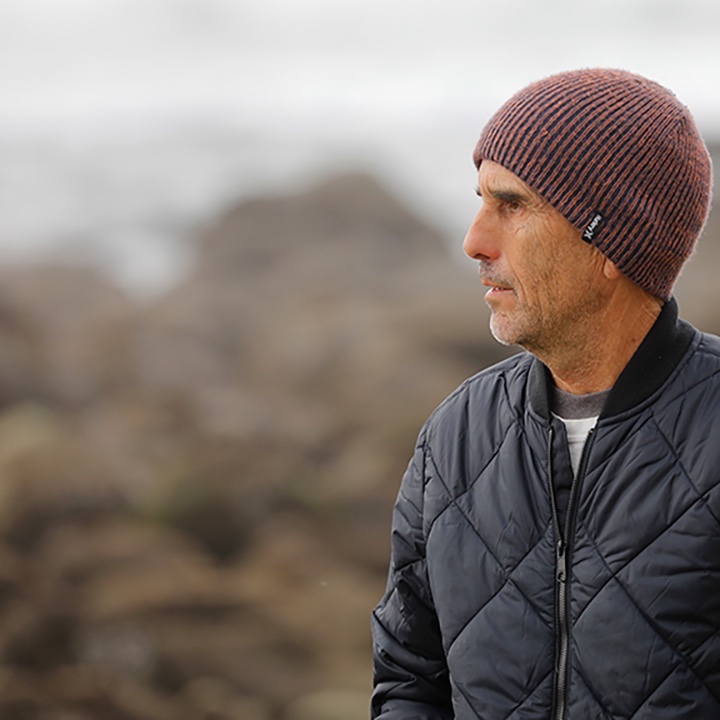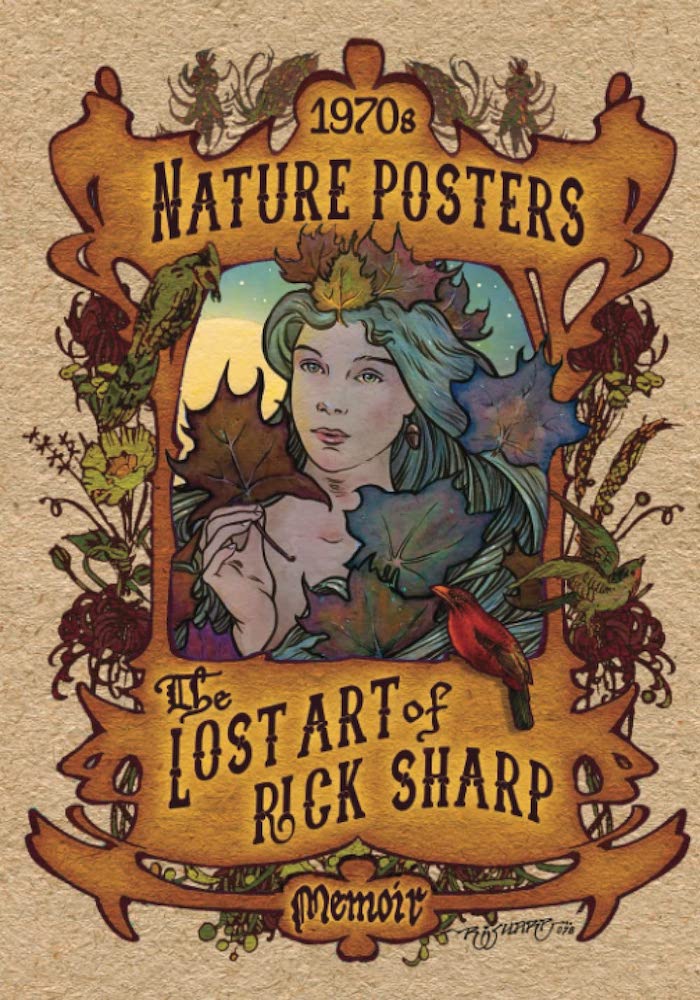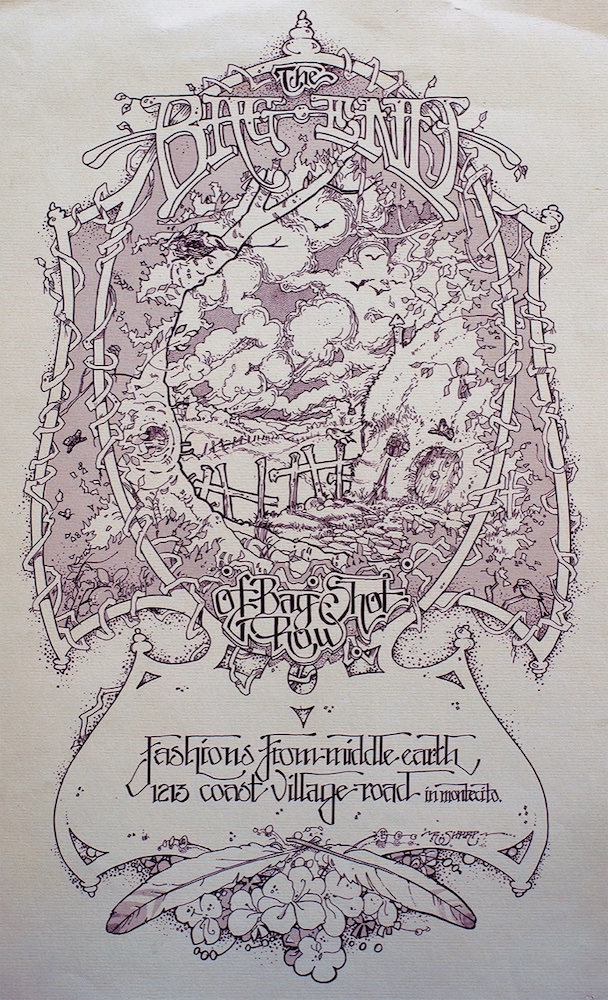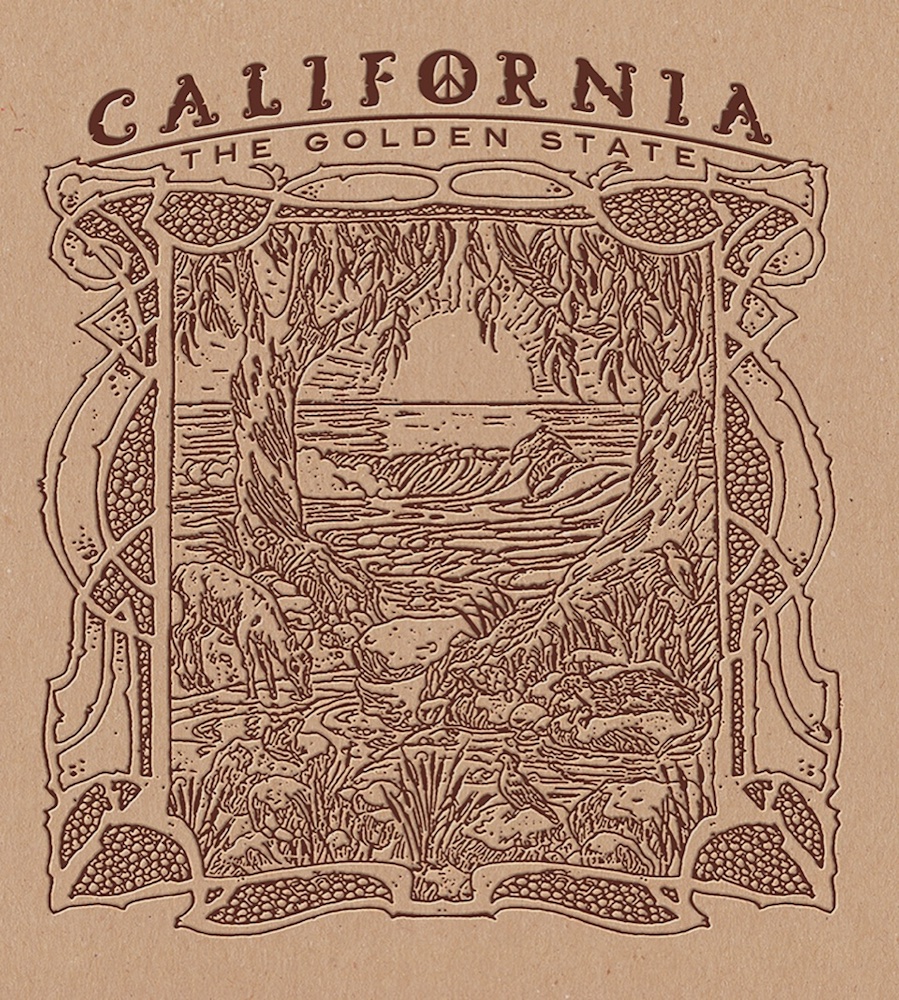Poster Artist Rick Sharp: Ambassador of ‘70s-era Santa Barbara

There are people who so inhabit and illuminate their respective epochs, their lives can seem almost foreordained. Add to that list a starry-eyed surfer from Houston named Rick Sharp, whose canon of poster art so deeply captures the ‘70s ambiance it can truly be said to have helped define it. Sharp will be discussing and signing his variously soft-spoken and ribald memoir 1970s Nature Posters: The Lost Art of Rick Sharp on November 18 at 3 pm at Tecolote Book Shop in Montecito’s leafy Upper Village. For those of us who know, love, and even revere our little slice of Central Coast paradise on Earth, Sharp’s delicious book is an immersive journey. Why? His “artist’s way” has been a kismet-riddled life – one that largely blossomed in the beautifully recalled Santa Barbara of the ‘70s.
“I really wasn’t cut out to do anything else,” Sharp says today. “There was no other choice. Throughout my career, people would occasionally ask me about living the artist’s dream. I would say something profound like, ‘I guess I’m doing that.’ Sometimes it’s hard to dig what’s happening in the moment.” Producing a full-page commission for Rolling Stone magazine while still in high school, Sharp came fully into his own just in time to describe an indescribable decade. As the kid’s “career” began to fly of its own accord, did his family take note? “Funny, it was such a turbulent time in my life: my father and I weren’t getting along much at all. I was escaping into my art studio closet whenever I was home. I think my mother saw my strides and supported me – but I don’t think they saw my progression until they got a book in the mail one day: Reflections on the Natural – The Poster Art of Rick Sharp (published by Variant Press) a couple of years after I graduated high school.”
Not that graduating high school was a walk in the park. When Sharp’s profound ineptitude with high school math threatened to keep him from graduating Houston’s Westbury High School, help came from a wholly unexpected quarter. Remedial Math’s Coach Hale – the school’s bull-necked, buzz-cut, football-loving gym teacher – clearly saw in Sharp the helpless thrashings of an otherwise talented math failure. Hale transparently contrived to carry Sharp over the finish line, where his art scholarship awaited. Jaw-dropping deets are in the book. “To this day I still get emotional thinking about that incident,” Sharp says. “I think art strikes a primitive instinct in people.”


The free-spirited, appealingly bewildered Texan landed in Santa Barbara in the immediate wake of the ’69 oil spill that would put our previously unknown little beach town on the map – and in the eye of the New Environmentalist hurricane. The “Return to Eden” zeitgeist spawned by the devastating Santa Barbara oil spill played uncannily to Sharp’s artistic strengths. His posters – filigreed elysian scenes of nymph-like figures peaceably exulting in nature’s idyll – are so delicately packed with detail and whimsy, the viewer’s mind wanders in a mimicry of the awe actual nature inspires. Yes, you’ve seen the man’s art. You may not immediately recognize his name, but Sharp’s gorgeous work is as familiar as a gust of patchouli at a Dead concert.
His charming memoir chronicles a lost Santa Barbara whose pre-tourist-hive innocence and organic-naif spirit are nearly heartbreaking to recall. One of his early sponsors was a guy he bumped into at Santa Barbara’s Ecology Center. Eco-warrior and future Santa Barbara mayor Hal Conklin would enlist the hopeful, long-haired walk-in to illustrate the covers of the center’s magazines as they assiduously bird-dogged the cleanup of the oil-soaked beaches. The org would later be rechristened the Environmental Defense Center. Sharp describes his short and disastrous gig bussing tables at John Dory on the harbor – the future Brophy Brothers restaurant. Taking art classes at the Brooks Institute of Fine Art and Photography, Sharp’s burgeoning local success as an illustrator, and the News Press’ attendant Brooks-free publicity, would so rankle the school’s leadership they asked Sharp to leave. When they realized his potential as an instructor of “commercial art,” they sheepishly invited him back to teach.

All the while, Sharp was embedding himself in the nascent American Riviera – producing poster art for KTYD, Channel Islands Surfboards, the Natural History Museum, Donovan at the Lobero, and Arlo Guthrie at the Bowl. His posters were, for a time, everywhere you looked. Sharp would later take on such clients as O’Neill wetsuits, expanding his territory from San Diego to San Francisco, Oregon, and beyond. As his star rose so did his star-crossed dalliances. Sharp’s book charmingly paints his own life into the day’s Santa Barbara scene; his early apartment on Islay, his emotionally searching evening walks around the lamplit Mesa neighborhood where for a time he had a working space.
The last of his domicile-studios, in Montecito, dovetailed with his role as unofficial caregiver for an aging, genteel scion whom Sharp refers to as “Mrs. B.” Through an arrangement orchestrated by her late husband at the disbursement of his rancho holdings, Mrs. B was able to inhabit a home in Montecito whose small adjacent cottage became Sharp’s last California studio, in exchange for which Sharp would become cook, security guard, maintenance man, gardener, and in one particularly frightful instance, rescuer for the lovely lady. When ‘80s synth music came to dominate the charts, so did artists like Patrick Nagel, whose cover for Duran Duran’s Rio typifiedthe hard-edged new wave aesthetic. The ascendant synth army would bleat out a digital siren’s song for Sharp’s organic woodland and beachfront fantasias. As the curtain rang down on his Golden Age, his dear Mrs. B. quietly passed. Sharp closed the book on what had been a deeply felt and glorious decade for his art.
The cross-pollination of Sharp’s era-defining posters and SB’s ‘70s adolescence is elegiac. The man is a messenger from one of our town’s most beloved epochs and is that glowing era’s artist-of-record. Drop into Tecolote and meet the guy who exquisitely illustrated a chapter adored by all, and whose final love affair with Montecito is a matter of artistic record. “I roamed this area long ago with sketchbook in hand,” Sharp says wistfully. “I captured the mountains, foothills, beaches, and the beautiful people I found here. I was a lucky young man.”
The author will be signing and discussing 1970s Nature Posters: The Lost Art of Rick Sharp on Saturday, November 18 at 3 pm at Tecolote Book Shop – 1470 East Valley Road in Montecito’s Upper Village. For more information, call (805) 969-4977.
For those who cannot attend the book signing and talk at Tecolote on Saturday, a pop-up book talk will take place at Island Brewing Company in Carpinteria at noon on Sunday; followed by a musical performance of Flower Power songs at 1 pm. To see the complete collection of Rick Sharp’s ’70s posters, visit www.ricksharp.com/early-poster-art







You must be logged in to post a comment.